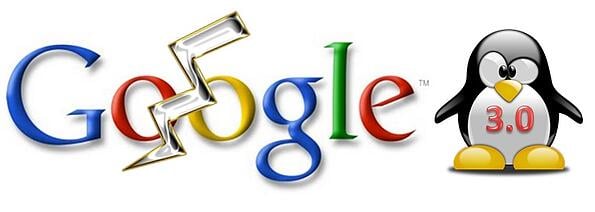The Aftermath of Google Penguin 3.0 - Have you been hit? What can you do?

The Google Penguin update was first announced back in April 2012. It was aimed at targeting websites that built low quality backlinks to try and manipulate the SERP’s (Search Engine Results Pages). After the update, many websites were hit and the SEO game started to change.
SEO companies like ourselves had to start thinking about different strategies to obtain links more naturally. It was like going from playing draughts to playing chess. The Penguin algorithm was again updated by Google in May 2013 and October the same year. These updates were known as Penguin 2.0 and Penguin 2.1 respectively.
Since these updates to the Google algorithm, webmasters and SEO companies around the world have been lying in wait for Penguin 3.0. Due to this, many have changed their link building tactics drastically over the last year or so to try and avoid being hit. Well, as many webmasters and SEO companies will know, the long anticipated Penguin 3.0 update began rolling out on the 17th of October this year and has so far only affected less than 1% of English search queries. Although this figure could well change as the update is still rolling out.
This may not seem like much and yes you might not have got hit by what has probably been the most anticipated algorithm update in Google’s history. However, what if you have? And, what can you do about it?
Carry on reading this article to discover the steps you can take to recover and start getting enquiries from your website once again. If you’re unsure whether you’ve been affected by the update or not, read this article – How to Tell if Your Website Has Been Penalised by Google.
1) Disavow and Wait for the Next Update
This first strategy I am going to cover briefly, is one of the first things that SEO’s will consider if one of their clients has suffered the wrath of Penguin 3.0. Many will have also tried this tactic after previous updates. Some may have now recovered.
The process of disavowing links is very lengthy and time consuming. The first step is to identify all of the low quality links that you believe are affecting your website. These could be paid links, reciprocal links or another type. If the link doesn’t adhere to Google’s Webmaster Guidelines then it is considered to be unnatural. That means the current Penguin update and future ones will probably not like it.
After the toxic links that are pointing to your site have been identified, the next step is to try contacting webmasters and asking them to politely remove any links they have pointing to you. However, if there are some you can’t get hold of, you still need to show Google that you have made the effort to contact them. These links can be requested to be discounted by Google, through submitting a Disavow file in Webmaster Tools. Find out more about this here – 5 Do’s and Don’ts of the Google Disavow Tool
The disadvantage of disavowing links is that firstly it can take Google a while before they even consider your request (which can take months). And secondly, you then have to wait for the next Penguin update before you see if it has had any impact on rankings. If that is anything like the waiting time between the previous two updates then that is around a year. Are you happy to join a year’s long waiting list, only hoping to have recovered?
2) New Domain Name
The second strategy to recover from an algorithmic penalty is to start afresh on a new domain name. You don’t have to design the site again as you can just buy a new domain name and transfer your files and content over to that. Also, some customers may still visit the old site so it is best to put a forward on it to the new domain. However, make sure you DO NOT 301 redirect it as you will be transferring the link juice from the old site. You don’t want this! The whole point of starting again on a new domain is so there is no backlink history. This way you can make sure you only obtain links in a natural way that Google won’t penalise you for.
The downsides to this are that new domains can take a while to build authority and trust in Google. However, it could be worth going for this strategy as your old site might never fully recover from the penalty. Another downside to buying a new domain is that in time you might have to do some re-branding across any products or things you currently have out there. Although the domain forward will help solve this issue anyway.
3) Turn to AdWords
The last tactic I am going to talk about in this article is turning to AdWords. Yes, you may not get as good ROI (return on investment) as you did from organic SEO but AdWords is a great way to start getting your website seen again by your potential customers. If you do it correctly and have your account managed by an expert, then your business will surely start attracting leads and enquiries once again. If you would like more information on Google AdWords, read this article here – Does Google AdWords Work?
Finally, if you are in this position, post Penguin 3.0 and you are thinking of ways forward, then there are 3 clear strategies I have mentioned in this article. Hopefully this has been useful and you can now make your decision and move onwards. The choice is yours. Comment on your experiences with Penguin 3.0 and other previous updates. I look forward to hearing how some of you have got on, and what you have done to recover. Last but not least, to all the SEO’s and webmasters out there, good luck!



